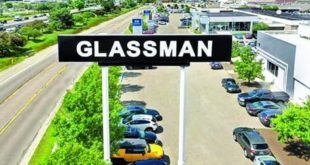
Alongside fixed operations, earnings from used-vehicle sales and finance and insurance generate the bulk of dealership gross profits today. But executives at the public groups warn that shifting focus to used-car sales may adversely impact F&I opportunities.
For all six public dealership groups, F&I profits reached peak levels in 2019, growing alongside used-vehicle sales. Pack leader AutoNation Inc. cleared $ 1 billion in total F&I revenue and gross profit — the highest on record for a public retailer — as all six of the nation’s public retailers boosted F&I profits to unprecedented levels.
But do those profit powerhouses necessarily work in opposition, as several executives at public retailers have hinted? Does an uptick in used-car sales really drag down F&I figures? According to one industry analyst, any detriment to F&I profits hasn’t manifested materially at any of the publics. But, it could slow growth moving forward.
“The overall combined new and used gross profit per unit still continued to rise” in 2019, said J.P. Morgan analyst Rajat Gupta, based on “higher penetration of vehicle service contracts and other insurance products which is … helping offset the negative mix impact.”
AutoNation CEO Cheryl Miller has long cited concerns that the blended dollar — the mix of F&I profits on new vehicles compared with used, as the sales mix shifts in favor of used vehicles — will drag down F&I profit per vehicle. At Lithia Motors Inc., the No. 3 largest public retailer in the U.S., concerns that employees are more likely to discount F&I products sold on used or value auto sales could also drag those profits.
Sonic Automotive Inc., however, remains a notable exception, as its EchoPark brand of standalone used-vehicle stores average F&I profit per vehicle of more than $ 2,200, compared with about $ 1,500 per vehicle at Sonic’s traditional franchised stores.
Used-vehicle volume growth significantly outpaced new in 2019, and the impact on F&I profits is a rising concern, though many groups have plans to combat the so-called blended dollar. Based on fourth-quarter 2019 and full-year results, the nation’s largest public retailers are preparing for a profit shift, even as F&I profit per vehicle soars alongside used-car sales.
Publics aiming at a wider consumer base with targeted F&I products could increase vehicle sales, and subsequently more F&I dollars, even if profit per unit could slide alongside added volume.
Strategies may diverge among the publics on how to increase used-car sales and F&I dollars, but F&I figures likely will still climb in 2020, albeit at a slower clip than last year.


